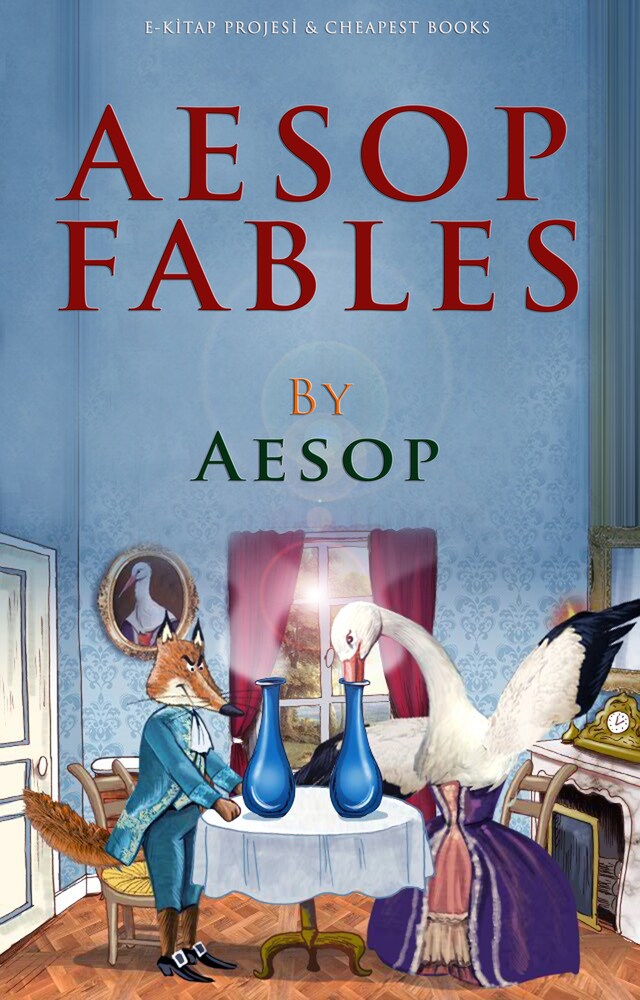
Aesop Fables
Beskrivning av boken
ILLUSTRATED COMPLETE 283 FABLES WITH
INTRODUCTION TEXT BY G. K. CHESTERTON
The entire collection, which contains great lessons for adults as well as for little ones, has been carefully compiled in this book by our publishing house.
Aesop embodies an epigram not uncommon in human history; his fame is all the more deserved because he never deserved it. The firm foundations of common sense, the shrewd shots at uncommon sense, that characterise all the Fables, belong not him but to humanity. In the earliest human history whatever is authentic is universal: and whatever is universal is anonymous.
In such cases there is always some central man who had first the trouble of collecting them, and afterwards the fame of creating them. He had the fame; and, on the whole, he earned the fame. There must have been something great and human, something of the human future and the human past, in such a man: even if he only used it to rob the past or deceive the future. The story of Arthur may have been really connected with the most fighting Christianity of falling Rome or with the most heathen traditions hidden in the hills of Wales. But the word "Mappe" or "Malory" will always mean King Arthur; even though we find older and better origins than the Mabinogian; or write later and worse versions than the "Idylls of the King."
The nursery fairy tales may have come out of Asia with the Indo-European race, now fortunately extinct; they may have been invented by some fine French lady or gentleman like Perrault: they may possibly even be what they profess to be. But we shall always call the best selection of such tales "Grimm's Tales": simply because it is the best collection.
The historical Aesop, in so far as he was historical, would seem to have been a Phrygian slave, or at least one not to be specially and symbolically adorned with the Phrygian cap of liberty. He lived, if he did live, about the sixth century before Christ, in the time of that Croesus whose story we love and suspect like everything else in Herodotus. There are also stories of deformity of feature and a ready ribaldry of tongue: stories which (as the celebrated Cardinal said) explain, though they do not excuse, his having been hurled over a high precipice at Delphi. It is for those who read the Fables to judge whether he was really thrown over the cliff for being ugly and offensive, or rather for being highly moral and correct.
But there is no kind of doubt that the general legend of him may justly rank him with a race too easily forgotten in our modern comparisons: the race of the great philosophic slaves. Aesop may have been a fiction like Uncle Remus: he was also, like Uncle Remus, a fact. It is a fact that slaves in the old world could be worshipped like Aesop, or loved like Uncle Remus. It is odd to note that both the great slaves told their best stories about beasts and birds.
But whatever be fairly due to Aesop, the human tradition called Fables is not due to him. This had gone on long before any sarcastic freedman from Phrygia had or had not been flung off a precipice; this has remained long after. It is to our advantage, indeed, to realise the distinction; because it makes Aesop more obviously effective than any other fabulist. Grimm's Tales, glorious as they are, were collected by two German students. And if we find it hard to be certain of a German student, at least we know more about him than We know about a Phrygian slave. The truth is, of course, that Aesop's Fables are not Aesop's fables, any more than Grimm's Fairy Tales were ever Grimm's fairy tales. But the fable and the fairy tale are things utterly distinct. There are many elements of difference; but the plainest is plain enough. There can be no good fable with human beings in it. There can be no good fairy tale without them.
 Aesop
Aesop 300 Sidor
300 SidorKategorier:
Format:
Språk:
Engelska